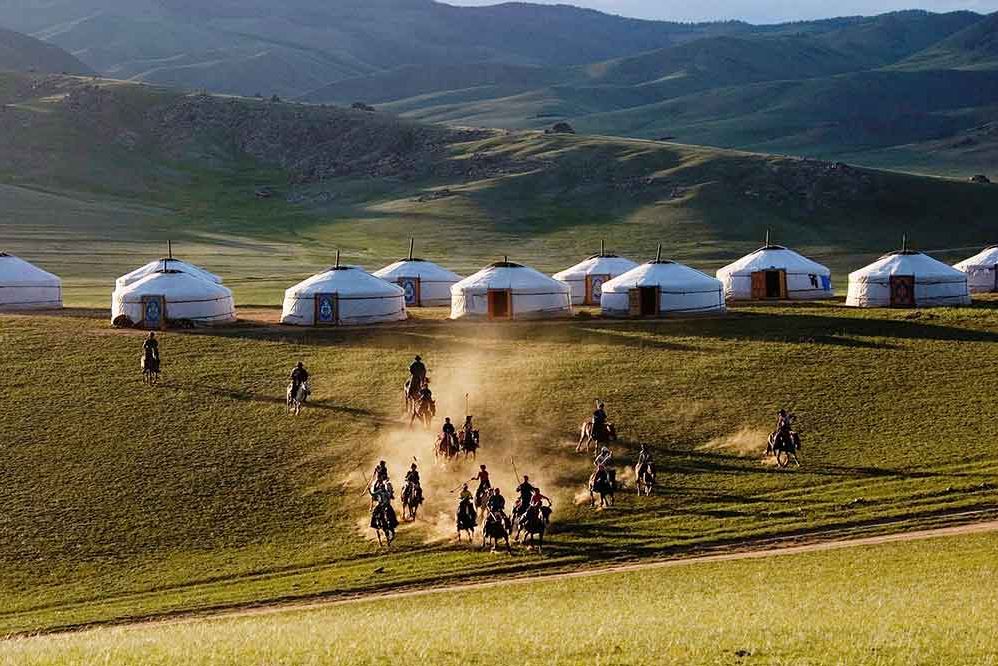The Gobi Desert is one of the most formidable and unique deserts in the world. Stretching across northern China and southern Mongolia, it is distinguished by its cold temperatures and rugged terrain. Unlike the more stereotypical sandy deserts, the Gobi is largely composed of bare rock, gravel plains, and occasional sand dunes. This article explores the vastness of the Gobi Desert, its unique climate, fascinating history, and the resilience of the life forms that have adapted to its unforgiving environment.
Introduction to the Gobi Desert
The Gobi Desert spans approximately 1,295,000 square kilometers, making it the fifth-largest desert in the world and the largest in Asia. Unlike the sweltering heat often associated with deserts, the Gobi is a cold desert. Winters are extremely harsh, with temperatures frequently dropping below -40°C (-40°F), while summers can still reach temperatures as high as 45°C (113°F). The Gobi’s climate is shaped by its location between two mountain ranges, which block rainfall and create a rain shadow effect.

Formation and Geography of the Gobi Desert
The Gobi Desert’s unique landscape is largely the result of the Himalayas, which obstruct moisture-laden clouds from reaching this area, leaving it arid and dry. The terrain is a fascinating mix of barren rock, gravel, sparse vegetation, and isolated sand dunes. This variety makes the Gobi Desert visually striking but challenging to navigate. Unlike sandy deserts, the Gobi’s gravel plains can appear more like a bleak steppe, giving travelers an eerie sense of isolation.
The Gobi Desert’s Climate and Seasons
The climate in the Gobi Desert varies significantly throughout the year. Winters are long and bitterly cold, with fierce winds sweeping across the plains. Snow is infrequent but possible, and frost covers much of the desert. Summers, on the other hand, bring intense heat during the day, but temperatures can plummet at night. Rainfall is scarce, with most precipitation occurring in the form of short, heavy thunderstorms during the summer months. This extreme range of temperatures makes survival challenging for both humans and animals.
Flora and Fauna of the Gobi Desert
Despite the harsh conditions, the Gobi Desert is home to a surprising variety of life. Its flora includes drought-resistant shrubs, grasses, and the hardy saxaul tree, which can survive with minimal water. The fauna is equally resilient, including the Bactrian camel, snow leopard, Gobi bear, and Mongolian wild ass mariatogel. These animals have adapted to the extreme temperatures and limited water sources, displaying remarkable resilience. The Gobi bear, for example, is one of the rarest bears in the world, surviving on the scarce vegetation and occasional streams in the desert.

Human History and the Gobi Desert
The Gobi Desert holds a significant place in history, particularly in relation to the ancient Silk Road. Traders and travelers once crossed its barren expanses, linking China with the Middle East and Europe. The desert has also witnessed the rise and fall of the Mongol Empire, with Genghis Khan and his successors using the Gobi as a natural barrier and launching point for their conquests. Today, the desert remains sparsely populated, with nomadic herders and small towns scattered across its vastness.

The Gobi Desert in Modern Times
In recent years, the Gobi Desert has attracted scientific interest due to its rich deposits of dinosaur fossils. Paleontologists have discovered numerous dinosaur remains, including eggs and fully preserved skeletons, giving insight into prehistoric life. Additionally, the Gobi has been a site for mineral exploration, with large deposits of copper, gold, and coal. These resources have drawn international mining companies, although environmental concerns have sparked debate over the impact on the desert’s fragile ecosystem.

Environmental Challenges Facing the Gobi Desert
The Gobi Desert faces environmental threats, including desertification, which is exacerbated by climate change and human activities such as mining and overgrazing. The Chinese government has initiated several projects to combat desertification, including the planting of trees along the desert’s edges, known as the “Great Green Wall.” However, the effectiveness of these projects is still under scrutiny, as maintaining plant life in such a dry environment is challenging.
The Gobi Desert stands as a testament to the resilience of life in one of the most extreme environments on Earth. From its role in the Silk Road to its unique ecosystem and modern challenges, the Gobi Desert remains a place of mystery and fascination. As we continue to explore and understand this cold and desolate landscape, we are reminded of the delicate balance between nature and human influence, as well as the enduring power of the natural world.
Read Also: Memahami Package Management: Mengapa Memilih Yarn Daripada NPM?




